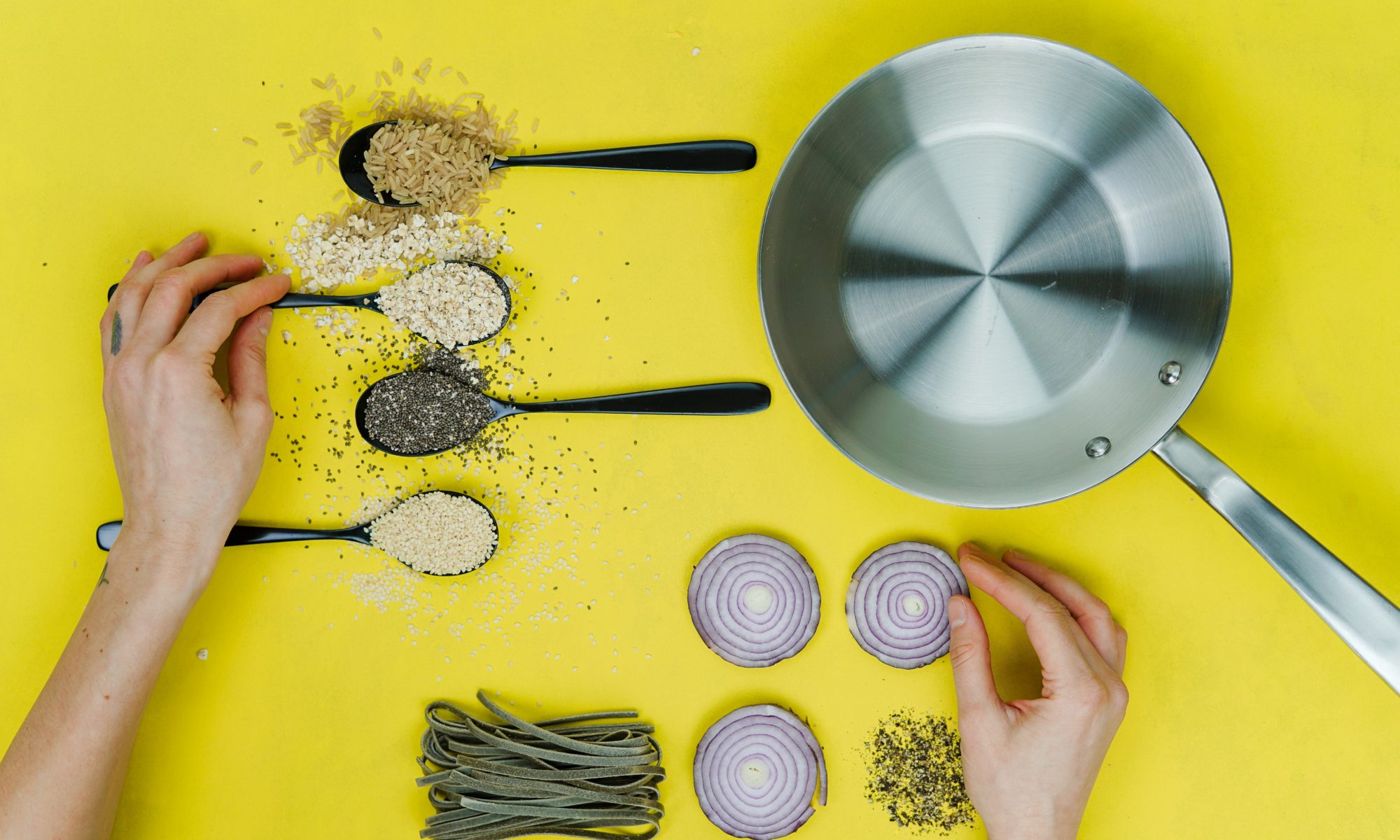Guest article from pandorasproducts.net
There’s no denying it…success relies on planning. Your pantry is no different—think of it as your vision board for health. Line your cabinets with healthy varieties of whole foods and implement them into your meal plans. THAT is how you thrive with plant foods.
Here are a few secrets from my own pantry, though I have more than what’s listed. Add as you go along the cooking journey and enjoy the process!
Cooking with Spices and Herbs for Flavor
Spices and Herbs reduce the need for salt and make food healthier, just as wild herbs do (also known as weeds to some).
Spices are the seeds, bark, roots, buds, cardamom, or berries of plants. Capers, Chiles, Cayenne, Cinnamon, Cloves, Coriander, Cumin, Ginger, Mustard, Nutmeg, Peppercorns, Saffron and Turmeric are examples of cooking spices. They usually last about 2-3 years as powder or 3-4 as whole seeds. Grind whole seeds in a coffee grinder or mortar and pestle.
Herbs are the leaves, stems, and flowers of aromatic plants. Basil, Bay leaf, Chives, Cilantro, Dill, Oregano, Rosemary, Sage, Tarragon and Thyme are all examples of herbs. These last about 1-3 years and can be frozen fresh to maintain potency.
When cooking with herbs, note the main difference between fresh and dried herbs: Fresh herbs should be added as close to the end of cooking as possible; dried herbs will be stronger than fresh and can be added earlier in cooking.
| Basic Spices: | Common Uses or Ethnicities Commonly Known for it: |
| Basil | Tomatoes, salads, pasta dishes, great combined with garlic |
| Bay Leaves | Soups, sauces (do not eat whole) |
| Chives | Soups, potatoes |
| Cilantro | Salsa, Mexican, salads |
| Coriander | Mexican, Indian, Latin, Caribbean (seed of cilantro AKA culantro–sweet) |
| Cumin | Chili’s, Mexican, Latin, Caribbean (Ayurvedically cooling) |
| Dill | Soups, salads, breads—seeds used in pickles |
| Oregano | Italian, Mexican, tomatoes |
| Rosemary | Stews, sauces, potatoes |
| Sage | Stuffing’s, soups, beans, tomatoes, any sort of sausage imitation |
| Tarragon | Peas, salad dressings, sauces, tomatoes (sweet flavor) |
| Thyme | Stews, soups, tomatoes |
Other Flavorings
In addition to cooking with herbs and spices, successful pantry cooking relies upon understanding other common and useful cooking flavorings.
Vinegars
When wine or other alcoholic liquid is further fermented, bacteria turns it into acetic acid. The resulting vinegar is a thin, sour liquid that can be used as a preservative, cooking ingredient, condiment, and cleaning solution. Wine Vinegars are made from white or red wine, sherry, or champagne; Malt Vinegar is produced from malted barley and is sweet and mild in flavor. Distilled Vinegar is made from grain alcohol and has the highest acidic content. It is completely clear, has an intense flavore commonly used in Thai sauces, and is an excellent cleaning product. Cider Vinegar is produced from unpasteurized apple juice or cider. Rice Vinegar is brewed from rice wine and is clear and slightly sweet. Flavored Vinegars simply have herbs, spices, or flavors added.
Fats (not a whole food—use sparingly)
Oil is the liquid form of fat. When working with oil, it is important to know smoking points of various oils to decide which is appropriate to use for your dish. If you’re searing or cooking in a wok, you’ll want a higher smoke point for the oil; it sears in the juices of vegetables and cooks them fast, improving the flavor. For basic sautéing, you don’t want a high temperature. Using a low smoke point oil (such as walnut) for a high heat dish results in your oil burning before your vegetables are cooked, creating a burnt taste.
Here are the smoke point of various oils I recommend for a healthy pantry:
Sesame Oil: 350º F (175ºC)
Walnut Oil: 359º F (182ºC)
Sunflower Oil: 390ºF (199ºC)
Peanut Oil: 425ºF (218ºC)
Olive Oil (not EVOO): 437ºF (225ºC)
Ghee (Clarified Butter): 450ºF (230ºC)
Safflower: 510ºF (265ºC)
Pantry Items – Beyond Herbs and Cooking Spices
There are many other items that give you a variety of flavors and nutrients:
- Rices: Keep a variety of rice in your cabinets and learn their different cooking techniques. Sushi rice, risotto, wild rice, plain rice mixes from bulk departments, and brown basmati rice are a few fun varieties to start with.
- Canned beans: Add quick protein to dishes with black beans, pinto beans, red beans, lentils, garbanzo beans, yellow-eyed beans, and white beans (navy or cannellini)
- Grains and meal: Barley, farro, freekah, couscous, polenta, grits
- Pasta: Try different shapes such as orzo or cavatelli. Use the correct shape for the type of sauce you’re making. (Tip: Bean pastas are a new healthy way to enjoy gluten-free, higher protein pastas).
- International sauces: Visit the international aisle of the grocery store and stock up on an assortment of flavors that can change the taste of a familiar dish.
- Tomato products: Use tomato paste to thicken sauces. Tomato sauces and diced tomatoes with onions or chilis help save on prep time.
- Protein standards: Quorn, Morningstar Farms, Yves (in the produce section), Nasoya tofu (make sure soy is organic or non-GMO), Tofurky, Gardein, Lightlife, Field Roast, Boca brand. (Side note: Because the Impossible Burger uses GMO ingredients not fully tested by the FDA, I do not recommend this product as a healthy alternative to meat.
- Various flours/sugars: Oat, almond, white wheat flours are my favorites. However, there are many other flours for gluten-free or healthier gluten options. Coconut sugar is an alternative, though I stick with raw, organic sugar. Sugar beets are one of the most common GM-crops; white flours are often processed with animal bone char as a whitening agent, so look for the “V” symbol on your package.
To sum it all up, I’ll end with two words: Pantry Cooking. This concept is key, as is having the right ingredients and flavorings on hand helps you overcome your dependence on recipes. With the right pantry items on hand, you can really begin to cook!
Photo via Unsplash


